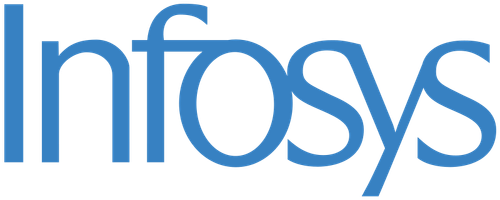- Home
- »
- CompTIA Network +
CompTIA Network+ Certification Course
CompTIA Network+ is the industry standard for launching IT careers into today’s digital world.
Course Highlights
- Six month Duration
- 4.8 Google reviews
- Senior trainers
- Internship Certificate
- Emerging institute
- Placement ready
- 25+ Hiring Partners
- Microsoft Certificate
- Guest Lectures
REGISTER NOW
FOR FREE DEMO
CompTIA Network+ Certification Course
Our Alumni Works At




Course Roadmap
Select Your ITIL Course
Choose the course and delivery method that suits your learning preferences.
Get Trained & Prepare
Attend the training sessions, and use the provided workbook to solidify your understanding.
Schedule Your Exam
Pick a convenient date and time for your online exam.
Take the Exam
Complete the exam online in a comfortable and secure environment.
Earn Your Accreditation
Pass the exam and receive your CompTIA A+ certification.
Enjoy Your Certification Benefits
Align IT with your business goals and enjoy a certification.
Program Highlights

Top Notch Faculty
Learn from Industry experts who are working in live environment with 10+ years of experience.

Network of 25+ hiring managers
A network of hiring managers to build strong relationships with companies seeking qualified candidates

Customized projects
Allows students to tailor their learning experience to their specific career goals

Industry focused curriculum
Industry ready curriculum built in collaboration with hiring manager to fulfill the industry needs

CompTIA Network+ Certification Course Overview
The CompTIA A+ Core Series requires candidates to pass two exams: Core 1 (220-1101) and Core 2 (220-1102) covering the following new content, emphasizing the technologies and skills IT pros need to support a hybrid workforce:
- Increased reliance on SaaS applications for remote work
- How to remotely diagnose and correct common software, hardware or connectivity problems
- Evolving core technologies from cloud virtualization and IoT device security to data management and scripting
- Multiple operating systems, when to use them and how to keep them running properly
- Reflects the changing nature of the job, including how to assess if it’s best to fix something on site, or send it to a specialized provider
CompTIA A+ is compliant with ISO 17024 standards and approved by the U.S. DoD to meet Directive 8140.03M requirements. Regulators and governments rely on ANSI accreditation because it provides confidence and trust in the outputs of an accredited program. Over 3 million CompTIA ISO/ANSI-accredited exams have been delivered since January 1, 2011.
Our Success Stories
Growth Scholars exceeded my expectations with their CompTIA A+ course. The material was clear, and the hands-on labs made complex concepts easy to understand. Their trainers were knowledgeable and approachable, ensuring all my doubts were resolved. Highly recommended!
CompTIA Network+ Exam Details
| Category | Details |
|---|---|
| Exam Codes |
CompTIA A+ 220-1101 (Core 1) and 220-1102 (Core 2) Candidates must complete both 1101 and 1102 to earn certification. Exams cannot be combined across the series. |
| Exam Description |
CompTIA A+ 220-1101 covers mobile devices, networking technology, hardware, virtualization and cloud computing. CompTIA A+ 220-1102 covers operating systems, security, software, and operational procedures. |
| Number of Questions | Maximum of 90 questions per exam |
| Type of Questions | Multiple choice questions (single and multiple response), drag and drops, and performance-based. |
| Length of Test | 90 Minutes per exam |
| Passing Score |
220-1101: 675 (on a scale of 900) 220-1102: 700 (on a scale of 900) |
| Recommended Experience | 9 to 12 months hands-on experience in the lab or field |
| Languages | English at launch. German, Japanese, Portuguese, Thai, Spanish, and French. |
| Retirement | TBD - Usually three years after launch |
| DoD 8140 Approved Work Roles | Technical Support Specialist, System Administrator, Cyber Defense Infrastructure Support Specialist. |
Tools You Will Learn
Python
Power BI
Tableau
Generative Ai
Machine Learning
MySQL
Statistics
Large Language Model
What Skills Will You Learn?
Hardware
Identifying, using and connecting hardware components and devices, including the broad knowledge about different devices that is now necessary to support the remote workforce
Operating Systems
Install and support Windows OS including command line and client support, system configuration imaging and troubleshooting for Mac OS, Chrome OS, Android and Linux OS
Software Troubleshooting
Troubleshoot PC and mobile device issues including common OS, malware and security issues
Networking
Explain types of networks and connections including TCP/IP, WIFI and SOHO
Troubleshooting
Troubleshoot real-world device and network issues quickly and efficiently
Security
Identify and protect against security vulnerabilities for devices and their network connections
Mobile Devices
Install and configure laptops and other mobile devices and support applications to ensure connectivity for end users
Virtualization & Cloud Computing
Compare and contrast cloud computing concepts and set up client-side virtualization
Operational Procedures
Follow best practices for safety, environmental impacts, and communication and professionalism
Month On Month Journey
Step-by-Step Mastery: From Basics To Internship
Introduction
- What is ITIL®?
- ITIL® 4 Certification Journey
- Course Objectives
- About the Course
Module 1
Key Concepts of Service Management
- Concept of Value
- What Do We Mean by Value?
- Definition of Value
- What is an Organization?
- How is Value Created Between Organizations?
- Service Relationships
- Providers and Consumers Co-Create Value
- Stakeholder and Service Consumer Roles
- Stakeholders
- Service Provider Organizations
- Service Consumer Organizations
- Other Stakeholders
- How is Value Created?
- Service Consumer Roles
- Activity
- Service Offerings
- What is a Product?
- What is a Service?
- What is a Service Offering?
- Creating Value with Services
- Value Co-Creation
- Service Provider
- What are Service Consumers?
- What are Products and Services?
- Definitions
- What are Service Relationships?
- What is the Meaning of Service Provision?
- What is Service Consumption?
- Service Relationship Management
- How Organizations Co-Create Value?
- Service Relationship Model
- Value, Outcomes, Costs, and Risk
- Definitions
- What Can Be Described as Utility and Warranty?
- Review and Reflect
- Quiz
Module 2
Key Concepts of ITIL® 4
- Four Dimensions of Service Management
- Holistic Approach to Service Management
- Four Dimensions of Service Management
- Organizations and People
- What the Dimension Includes?
- What is Culture, and Why is it Needed?
- What a Supportive Culture Requires?
- What to Pay Attention to?
- Organizational Complexities
- Information and Technology
- Things to Consider
- Partners and Suppliers
- Organizations and their Partners and Suppliers
- Forms of Cooperation
- What Goes into Supplier Strategy?
- What is a Value Stream?
- Value Streams and Processes
- Questions to create, deliver and improve
- Activity
- ITIL® Service Value System
- ITIL® SVS
- ITIL® SVS Inputs
- Governance
- Challenges of Silos
- Need for Continual Improvement
- Applying the SVS
- Service Value Chain
- Introduction to the ITIL® Service Value Chain
- Opportunity Vs Demand
- Converting Inputs into Outputs
- Service Value Chain, its Practices, and Value Streams
- Activities
- Review and Reflect Quiz
Module 3
Guiding Principles
- Introduction to the Guiding Principles
- What is a Guiding Principle?
- Focus on Value
- How Value is Perceived?
- CX and UX
- How Would You Apply this Principle?
- Start Where You Are
- Assess Where You Are
- Role of Measurement
- Applying the Principle
- Progress Iteratively with Feedback
- Role of Feedback
- Use of Feedback Loops
- Iteration and Feedback Together
- Collaborate and Promote Visibility
- Communication and Visibility
- Key Collaboration Pairs
- Promote Visibility
- Think and Work Holistically
- Keep it Simple and Practical
- Judging What to Keep
- Conflicting Objectives
- Applying the Principle
- Optimize and Automate
- Road to Optimization
- Using Automation
- Applying the Principle
- Activity: Case Studies
- Using the Guiding Principles
- Guiding Principles in Context
- Guiding Principles Your Examples
- Principle Interaction
- Applying the Guiding Principles
- Guiding Principles: Task
- Principle Interaction
- Review and Reflect Quiz
- Extension Activity 2
Module 4
ITIL® 4 Management Practices
- Purpose of the ITIL® Practices
- Management Practices
- 34 ITIL® Management Practices
- General Management Practices
- Service Management Practices
- Technical Management Practices
- Overview of Eight ITIL® Practices
- Eight Practices
- Information Security Management
- Contribution of Information Security Management to SVC
- Relationship Management
- Supplier Management
- Evaluating and Selecting Suppliers
- Contribution of Supplier Management to SVC
- IT Asset Management
- Contribution of IT Asset Management to SVC
- Service Configuration Management
- Contribution of Service Configuration Management to SVC
- Monitoring and Event Management
- Contribution of Monitoring and Event Management to SVC
- Deployment Management
- Approaches for Deployment
- Contribution of Deployment Management to SVC
- Release Management
- Contribution of Release Management to SVC
- Key Management Practices – Part 1
- What is an Incident?
- Incident Management Guidance
- Incident Management Tools
- Incident Updates
- Types of Incidents
- Collaboration
- Swarming
- Third-Party Products and Services
- Incident Management Contribution to SVC
- Service Request Management
- What is a Service Request?
- Steps for Request Fulfilment
- Request Processes and Procedures
- Service Request Management Contribution to the SVC
- Methods of Fulfilling Requests
- Service Desk
- Automation
- Task: Service Desk ‘Pitch’
- Service Desk Provisions
- Service Desk Support
- Service Desk Skills
- Service Desk Contribution to the SVC
- Key Management Practices – Part 2
- Problem Management
- Phases of Problem Management
- Identifying a Problem
- Problem Control
- Workaround
- Error Control
- Links to Other Practices
- Interfaces
- Problem Management Contribution to the SVC
- Continual Improvement
- Applying Continual Improvement
- Continual Improvement Model
- What is the Vision?
- Where are We Now?
- Where do We Want to Be?
- CSFs and KPIs
- How do We get There?
- Take Action
- Did we Get There?
- How do We Keep the Momentum?
- Methods to Continually Improve
- Continual Improvement Activity
- Tracking
- CI Responsibility
- Continual Improvement Contribution to the SVC
- Key Management Practices – Part 3
- Service Level Management
- Activity
- Service Level Agreements
- Key requirements for SLAs
- Watermelon SLA Effect
- Customer Engagement
- Customer Feedback
- Metrics
- Service Level Management Contribution to the SVC
- Change Enablement
- Define Change
- Scope of Change Enablement
- Change Authority
- Types of Change
- Scheduling
- Change Enablement Contribution to the SVC
- Review and Reflect
- Quiz
- Activities
- Course Review
- What’s Next?
Module 5
We've got answers
Frequently asked questions
Quick answers to questions you may have. Make an informed decision before embarking on your learning journey.
The CompTIA A+ certification is an entry-level IT certification that validates foundational knowledge and skills in areas such as hardware, networking, operating systems, troubleshooting, and security. It is widely recognized in the IT industry and is often the first step toward a career in IT.
The CompTIA A+ course is ideal for:
- Beginners who want to start a career in IT.
- Professionals seeking to validate their technical knowledge.
- Individuals looking to advance their careers in technical support, system administration, or IT operations.
There are no formal prerequisites to take the CompTIA A+ course. However, it is recommended to have 9 to 12 months of hands-on experience in IT or a related field to better understand the concepts.
To earn the CompTIA A+ certification, you must pass two exams:
- Core 1 (220-1101)
- Core 2 (220-1102)
Both exams are required, and they cannot be mixed with exams from other series.
The exams cover the following topics:
- 220-1101 (Core 1): Mobile devices, networking technology, hardware, virtualization, and cloud computing.
- 220-1102 (Core 2): Operating systems, security, software, and operational procedures.
Each exam lasts 90 minutes and includes:
- Multiple-choice questions (single and multiple response)
- Drag-and-drop questions
- Performance-based questions
The passing scores are:
- 220-1101 (Core 1): 675 out of 900
- 220-1102 (Core 2): 700 out of 900
No, the certification is valid for three years from the date of certification. To maintain your certification, you can renew it through the CompTIA Continuing Education (CE) program.
Yes, the course includes mock tests and workbooks to help you assess your knowledge and track your progress.
The exams are available in several languages, including:
- English (at launch)
- German
- Japanese
- Portuguese
- Thai
- Spanish
- French
You can take the CompTIA A+ exams through:
- Testing Centers: Visit an authorized Pearson VUE testing center.
- Online Testing: Take the exam remotely via Pearson VUE’s online platform.
After certification, you can pursue roles like:
- Technical Support Specialist
- Help Desk Technician
- IT Support Specialist
- System Administrator
- Cyber Defense Infrastructure Support Specialist
Ready to Start Your Journey?
Don't miss out on the opportunity to transform your career. Join Growthscholars and gain the skills you need to succeed in the tech industry.


